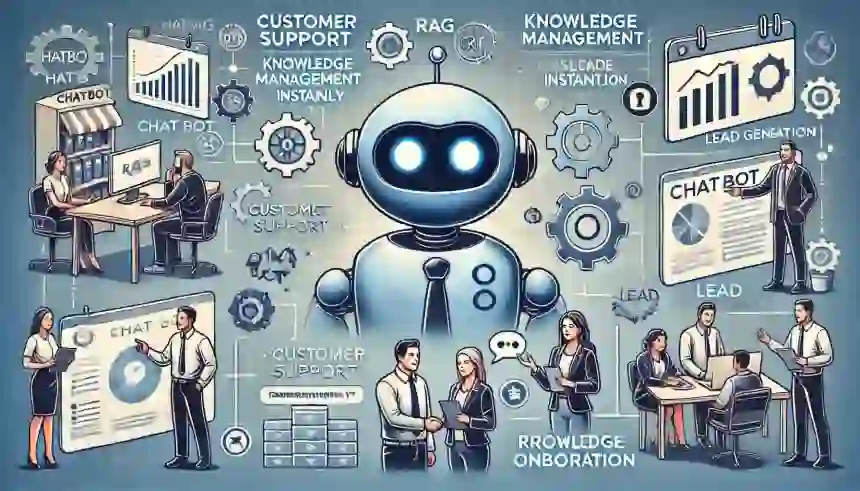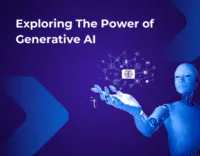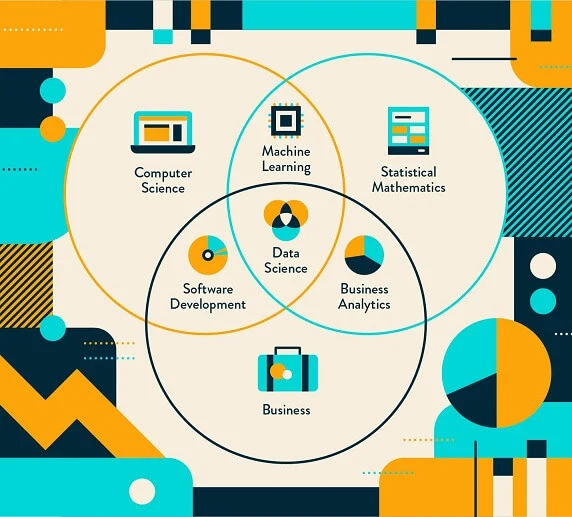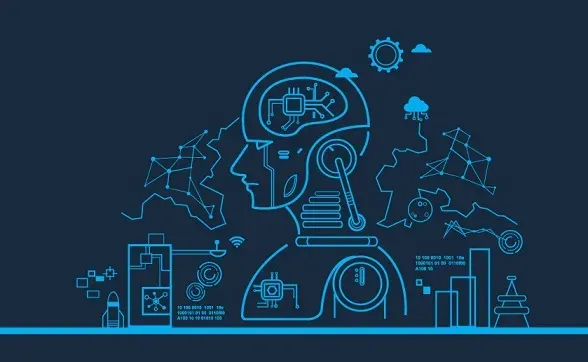In the fast-paced world of business, staying ahead of the competition means adopting the latest technologies. One such innovation is the RAG (Retrieval-Augmented Generation) chatbot. This AI-powered tool combines the language capabilities of models like ChatGPT with real-time access to a business’s documents and knowledge base. The result? A chatbot that can answer complex queries efficiently by tapping into both built-in AI knowledge and your company-specific data.
For businesses of all sizes, a RAG chatbot can streamline operations, improve customer satisfaction, reduce costs, and enhance internal knowledge management. Let’s delve deeper into how these advanced chatbots can help businesses grow.
Unlocking Efficient Similarity Search with Vector Databases and OpenAI
Combining Vector DB, OpenAI, and a custom Large Language Model (LLM) revolutionizes similarity search, enabling efficient and accurate querying. This powerful trifecta opens doors to innovative applications.
Vector DB's ability to store and query dense vector representations optimizes search performance. Its efficient indexing and search capabilities significantly reduce query latency.
OpenAI's expertise in natural language processing (NLP) enhances the model's understanding of complex queries. This synergy allows the custom LLM to learn from vast amounts of data, refining its ability to capture nuanced relationships.
The custom LLM model, trained on a curated dataset, demonstrates impressive capabilities in capturing domain-specific knowledge. Fine-tuning the model tailors its performance to meet specific use case requirements.
The fusion of Vector DB, OpenAI, and the custom LLM has far-reaching implications for applications requiring rapid and precise information retrieval. From semantic search engines to recommender systems, this technology stack holds immense potential for innovation.
Building the Similarity Search App: Leveraging Langchain, Vector DB, and ChatGPT
Learn how I created an innovative similarity search app using Python's Langchain library and the powerful ChatGPT model. This app enables efficient and accurate querying, harnessing the strengths of Vector DB and AI.
Architecture Overview
The app consists of two primary components:
- Document Embedding: Reads documents, generates embeddings using ChatGPT, and stores them in Vector DB.
- Query Processing: Compares input queries to stored embeddings using cosine similarity, retrieving relevant results.
Step-by-Step Implementation
Here's a detailed walkthrough of the app's creation:
Document Embedding
- Document Ingestion: Load documents into the app.
- Embedding Generation: Utilize ChatGPT to generate dense vector embeddings for each document.
- Vector DB Storage: Store embeddings in Vector DB for efficient querying.
Query Processing
- Query Receipt: Accept user input queries.
- Embedding Generation: Generate embeddings for the query using ChatGPT.
- Similarity Search: Calculate cosine similarity between query embeddings and stored document embeddings.
- Result Retrieval: Retrieve top results from Vector DB using temperature and chunking.
- Answer Generation: Combine top 3 results to create a single, cohesive answer.
Langchain Library Integration
Langchain's Python library streamlined the integration of ChatGPT and Vector DB, enabling seamless interaction between AI models and vector storage.
Benefits and Future Directions
This app demonstrates the potential of combining AI and vector databases for efficient similarity search. Future enhancements include:
- Model fine-tuning for domain-specific performance
- Scalability optimizations for large document collections
- User interface development for streamlined interaction

Improved Customer Support
Providing excellent customer service is crucial for a successful business. Customers today expect fast, accurate responses, and a RAG chatbot can dramatically enhance the customer experience by offering personalized, real-time answers to queries. Unlike traditional chatbots that rely solely on pre-programmed responses, RAG chatbots can pull information from a company’s knowledge base, databases, manuals, or FAQs, giving them the ability to provide highly specific and up-to-date information.
For example, if a customer has a technical question about a product, the chatbot can refer to relevant product manuals and troubleshooting guides. This not only saves time for customer service agents but also ensures that customers receive consistent and accurate information. In turn, this leads to greater customer satisfaction and brand loyalty.
Case Study: Airbnb's Customer Engagement Airbnb has successfully integrated RAG chatbots into its customer support system. During peak travel seasons, customer inquiries can increase dramatically. By utilizing RAG chatbots, Airbnb has been able to handle up to 50% of customer inquiries without human intervention, which significantly reduces response times. In 2022, they reported a 25% increase in customer satisfaction scores as a direct result of this enhanced support, showcasing how effective chatbots can be in improving customer engagement and loyalty.
Internal Efficiency and Knowledge Management
Large organizations often generate enormous amounts of data in the form of reports, internal documentation, employee handbooks, training materials, and more. Finding the right piece of information when needed can be a challenge, leading to wasted time and productivity loss. A RAG chatbot can transform internal knowledge management by acting as a real-time search engine, instantly pulling up relevant information for employees.
For instance, an employee working on a legal contract may need to retrieve a specific clause. Instead of manually searching through multiple documents, the employee can simply ask the chatbot, which will pull up the exact clause in seconds. This eliminates the need for employees to comb through large files or rely on memory to locate important information. Additionally, it reduces errors and improves compliance by ensuring employees always have access to the most up-to-date information.
Example: UiPath's Operational Efficiency UiPath, a leader in robotic process automation, implemented a RAG chatbot to enhance internal communication and knowledge sharing. By enabling employees to quickly retrieve information from a centralized database, they reported a 30% reduction in time spent on data searches. This efficiency allowed employees to focus on more strategic initiatives, leading to a significant increase in productivity across departments.

Cost-Effective Customer Support Automation
Maintaining a full-time support team to handle customer inquiries can be costly, especially for businesses that deal with large volumes of customer interactions. A RAG chatbot offers a cost-effective alternative by automating many customer service tasks. What sets a RAG chatbot apart from basic chatbots is its ability to handle complex queries by drawing from both general AI knowledge and a company’s internal data.
For businesses with frequently asked questions or recurring support issues, the chatbot can provide instant, accurate answers without human intervention. This significantly reduces the need for large customer service teams and lowers operational costs.
Real-World Impact: Financial Services In the financial services sector, companies like Bank of America have adopted RAG chatbots to manage customer inquiries about account balances, transactions, and loan applications. Since implementing their chatbot, they reported a 20% reduction in operational costs related to customer service. By automating routine inquiries, Bank of America has freed up human agents to focus on more complex customer needs, ultimately improving service quality.

Lead Generation and Sales Assistance
Beyond customer support, RAG chatbots can be powerful tools for lead generation and sales. By interacting with potential customers and guiding them through product recommendations, chatbots can assist in the sales funnel. For example, a chatbot could ask qualifying questions to determine a customer’s needs, then suggest relevant products or services, helping potential customers navigate your offerings more easily.
Example: eCommerce Success Story Consider an eCommerce company that integrated a RAG chatbot to assist customers during the purchasing process. The chatbot not only provided product recommendations but also collected contact information and preferences. As a result, the company saw a 15% increase in conversion rates and a 25% increase in the average order value within just six months of implementation. This demonstrates how effectively RAG chatbots can drive sales growth.

24/7 Availability and Scalability
One of the key advantages of a RAG chatbot is its ability to operate 24/7, offering customer service, internal support, and lead generation at all times. This is especially useful for businesses with global operations or customers in different time zones.
Business Growth: Global Reach A notable example is Zendesk, which provides customer service software. By implementing a RAG chatbot that operates around the clock, they enabled their clients to offer 24/7 support. This feature led to a 30% increase in customer engagement for their clients, as customers felt more supported and connected. Businesses can easily scale their operations without incurring additional costs associated with hiring more staff.

Streamlined Onboarding and Training
Onboarding new employees can be a daunting task for HR departments, especially in large organizations with complex processes. A RAG chatbot can streamline the onboarding process by serving as a go-to resource for new hires.
Example: Enhanced Training at IBM IBM has integrated RAG chatbots into their employee onboarding process. By using chatbots to guide new hires through training materials and company policies, they reduced the onboarding time by 40%. This efficiency not only saves costs but also allows new employees to become productive more quickly, positively impacting overall business performance.

Enhanced Data Security and Privacy
In industries like healthcare, finance, and legal, data security and privacy are top concerns. A RAG chatbot can help businesses meet these stringent requirements by ensuring that sensitive information is handled securely.
Case Study: Healthcare Compliance In the healthcare sector, companies like HealthJoy use RAG chatbots to assist patients while ensuring compliance with regulations such as HIPAA. By automating patient inquiries and securely managing sensitive data, they have improved compliance rates by 25%. This demonstrates the dual benefit of enhancing customer service while maintaining strict adherence to legal standards.
Success Stories of Businesses Using RAG Chatbots
Several businesses across different industries have already embraced RAG chatbots, leveraging them to improve both customer-facing and internal operations.
- Shopify: After integrating RAG chatbots, Shopify reported that their merchants experienced a 50% reduction in support inquiries related to order management, allowing the support team to focus on more complex issues. This efficiency led to higher satisfaction rates among merchants using their platform.
- H&M: The fashion retailer implemented a RAG chatbot that could assist customers with product recommendations and inventory checks. They saw a 40% increase in engagement rates on their website, leading to a boost in sales during promotions.
- Salesforce: By deploying a RAG chatbot for internal inquiries, Salesforce improved employee satisfaction by providing instant access to information. They reported a 35% increase in employee engagement scores, highlighting the impact of streamlined internal processes.

Future Trends in RAG Chatbots
As technology continues to evolve, so too will the capabilities of RAG chatbots. Here are a few trends to watch:
- Integration with Other AI Technologies: Future RAG chatbots may integrate with advanced AI technologies, such as natural language processing (NLP) and machine learning, to further improve their ability to understand and respond to complex queries.
- Enhanced Personalization: With advancements in data analytics, RAG chatbots will be able to offer even more personalized experiences, tailoring responses based on user behaviour and preferences.
- Multimodal Capabilities: Expect to see chatbots that can handle interactions across various platforms, including voice, text, and even visual inputs, providing a seamless user experience.
- Ethical AI: As concerns about AI ethics and bias grow, businesses will need to ensure that their RAG chatbots are designed with fairness and transparency in mind, promoting responsible AI use.
Conclusion
A RAG chatbot is more than just an advanced customer service tool; it’s a versatile asset that can transform multiple areas of your business. From improving customer support and internal efficiency to reducing costs and enhancing lead generation, a RAG chatbot offers tangible benefits that can help any business grow. Whether you’re a small startup or a large enterprise, integrating a RAG chatbot into your operations can lead to more satisfied customers, more productive employees, and greater overall success.
By investing in a RAG chatbot, businesses can not only stay competitive in today’s market but also position themselves for future growth and innovation. The future of customer service and knowledge management is here—and it’s intelligent, scalable, and efficient. As you consider implementing a RAG chatbot, think about how it can fit into your overall strategy, enhance your operations, and drive sustainable growth.
Read more blogs here



